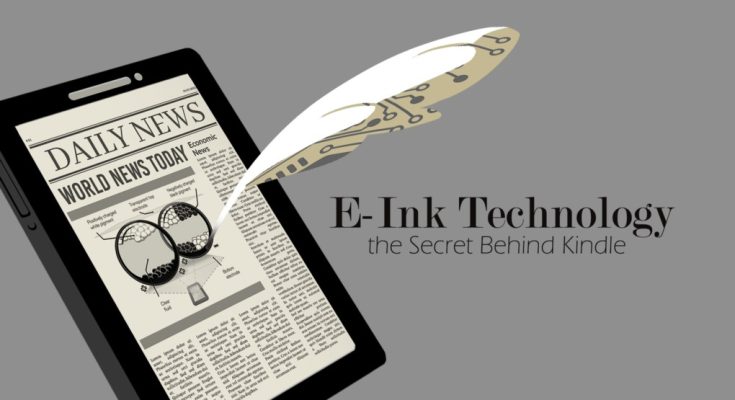For years, electronic ink has been a technology hiding in plain sight, most famously as the quiet, paper-like face of our e-readers. Its unique ability to hold an image without consuming power, combined with its glare-free, easy-on-the-eyes readability, carved out a perfect niche in the digital book market. But to see e-ink as just a tool for reading is to miss the plot entirely. We are standing on the precipice of a significant evolution, where this understated technology is poised to break out of its literary cocoon and become a ubiquitous, dynamic surface integrated into the very fabric of our physical world. The future of e-ink isn’t just about better e-readers; it’s about fundamentally changing how we interact with static information, from the price on a store shelf to the very walls of our buildings.
The initial expansion is already underway, moving from passive consumption to active creation and secondary information displays. Devices like the reMarkable tablet or the Onyx Boox series have demonstrated a compelling use case for e-ink as a digital paper substitute for note-taking and document markup. They offer a focused, distraction-free environment that mimics the tactile experience of pen on paper, a stark contrast to the glowing, notification-heavy world of tablets. This focus on “calm technology” is a powerful driver of its adoption. Similarly, we’ve seen it used for secondary screens on smartphones and on wearables, providing at-a-glance information like notifications, weather, or fitness stats without the battery drain associated with a primary LCD or OLED screen. These applications leverage e-ink’s core strength: displaying information persistently with near-zero energy cost, a critical advantage in an increasingly battery-conscious world.
Perhaps the most significant catalyst for e-ink’s broader future is the maturation of color. For a long time, color e-paper was the technology’s Achilles’ heel, plagued by muted tones, slow refresh rates, and high costs. However, recent breakthroughs, such as E Ink’s Kaleido and Gallery 3 technologies, are finally changing the narrative. These newer generations offer a richer color gamut and faster update speeds, making them viable for a far wider range of applications. Imagine retail environments where promotional signage and shelf labels can be updated instantly and centrally, displaying vibrant, eye-catching advertisements without the cost and complexity of wiring traditional digital screens. In public transportation, timetables and route maps could be updated in real-time, always visible even in direct sunlight. This move to color unlocks the potential for e-ink to replace static paper and power-hungry digital displays in countless commercial and public settings.
Beyond discrete devices, the most transformative vision for e-ink lies in its integration into smart surfaces and the Internet of Things (IoT). Because the technology is thin, flexible, and requires power only when changing its display, it can be applied to almost any object. Electronic shelf labels (ESLs) are the primary commercial example today, allowing retailers to automate price changes and reduce labor costs, but this is just the beginning. Consider smart packaging that could display expiration dates or usage instructions that update based on environmental conditions. Think of conference room name badges that can be reprogrammed for each new meeting, or even architectural surfaces—walls or windows—that could change color, pattern, or display information. This concept of a “programmable world” where static surfaces become dynamic and informative is a powerful one, and ultra-low-power e-ink is the only display technology practically suited to deliver it at scale.
Underpinning this expansion is a compelling business case rooted in sustainability and operational efficiency. A traditional backlit digital sign consumes energy every second it is on. An e-ink sign, by contrast, uses a burst of power to change the image and then nothing to hold it, leading to energy savings of over 99% for static content. For a large retailer with thousands of labels or a city deploying informational signage, the reduction in electricity consumption and associated carbon footprint is substantial. This isn’t just an environmental benefit; it’s a significant reduction in operating expenses. Furthermore, the ability to manage and update these displays remotely streamlines operations, eliminates the manual labor of replacing paper signs, and allows for dynamic pricing and marketing strategies that can respond to market changes in real-time.
Of course, challenges remain on the road to this e-ink-infused future. Refresh rates, while improving, still lag far behind LCD and OLED, making full-motion video impractical for the foreseeable future. The color vibrancy, though much better, has yet to match the punch of emissive displays. And while costs are decreasing, the initial investment for large-scale deployments can still be a hurdle for some businesses. However, the trajectory is clear. E-ink technology is no longer a one-trick pony. It is evolving from a specialized tool for digital reading into a versatile, sustainable, and powerful platform for ambient information. Its future is not in competing with the high-refresh-rate, content-consuming screens in our pockets, but in quietly and efficiently digitizing the vast landscape of static surfaces that surround us, making our world more connected, responsive, and intelligent.




